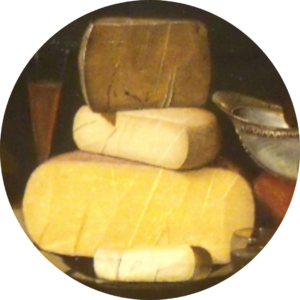History of Côtes du Jura Rouge Wine
The Côtes du Jura appellation, established in 1937, is a significant part of the Jura wine region in eastern France. This region is renowned for its diverse range of wine styles, including the red wines (rouge) which are distinctive due to the unique climatic conditions and terroir of the area. The Jura’s continental climate, with cold winters and warm summers, alongside its marl and limestone soils, contribute uniquely to the cultivation of specific grape varieties that produce the region’s characteristic wines.
Important Regions and Appellations
- Côtes du Jura: This is the largest appellation in Jura, spanning several villages and towns. It is known for both red and white wines, but the Côtes du Jura Rouge specifically highlights the region’s red wine production.
- Arbois: The first recognized AOC in France (1936), Arbois is notable for its red wines as well. It covers a larger area and often sets the standard in terms of style and quality for Jura reds.
- L’Étoile: Primarily known for whites, but it also produces reds that are typically lighter and very aromatic.
Key Grape Varieties and Their Characteristics
The red wines of the Côtes du Jura are primarily made from the following grapes:
- Poulsard (Ploussard): Known for producing light-bodied wines with a pale color and delicate aromas of red fruits and earth. It is quite tannic despite its light appearance, offering a distinctive complexity.
- Trousseau: A grape that yields more robust reds with deeper color and higher tannin levels. These wines often have a rich aroma profile that includes dark berries, spices, and sometimes smoky notes.
- Pinot Noir: Although more famously associated with Burgundy, Pinot Noir in Jura also produces elegant wines that can range from light to medium-bodied, with typical Pinot Noir characteristics of red berries and a smooth texture.
Côtes du Jura Rouge Characteristics
- Style: Typically, Côtes du Jura Rouge wines are lighter in body compared to other French reds but are celebrated for their aromatic complexity and the unique profile contributed by the dominant local grape varieties.
- Aging Potential: These wines can vary in their aging potential. Poulsard-based wines are often enjoyed young, while Trousseau and Pinot Noir have a capacity for longer aging, developing more nuanced flavors over time.
Côtes du Jura Rouge in the USA
- Market Presence: The presence of Côtes du Jura Rouge in the U.S. has been growing, particularly among enthusiasts of unique and traditional European wines. These wines cater to a niche market that appreciates their distinctiveness and heritage.
- Consumer Perception: American consumers who are adventurous with their wine choices are drawn to Jura wines for their unique characteristics and the story behind their production. The light-bodied, aromatic nature of these wines makes them a popular choice for those looking to explore beyond the more common international varieties.
- Availability: While not as widely available as more mainstream French wines, Côtes du Jura Rouge can be found in specialized wine shops and through online retailers that focus on European wines.
Conclusion
Côtes du Jura Rouge represents a unique facet of French winemaking. Its distinct grapes and winemaking techniques contribute to its niche appeal, particularly among those looking to explore beyond the typical wine offerings. As the appreciation for diverse and regional wines continues to grow in the U.S., Côtes du Jura Rouge is well-positioned to capture the interest of American wine aficionados looking for something out of the ordinary.
Here’s a table of tasting notes for Côtes du Jura Rouge wine, detailing various aspects from body to aging influences:
| Characteristic | Description |
|---|---|
| Body | Light to medium-bodied |
| Acidity | High acidity, giving a fresh and crisp mouthfeel |
| Sweetness | Typically dry |
| Tannins | Low to medium, often soft and well-integrated |
| Alcohol | Moderate (usually around 12% to 13% ABV) |
| Grape Flavors | – Poulsard: Red fruits like cherry and strawberry, earthy undertones |
| – Trousseau: Darker fruits, such as blackberry and plum, with spicy notes | |
| – Pinot Noir: Red berries, cherries, floral and sometimes herbal notes | |
| Flavoring Techniques | – Oak Flavoring: Not commonly used, preserving the delicate fruit flavors |
| – Malolactic Conversion: Common, softens acidity, adding creaminess | |
| – Lees Aging: Sometimes used, enhances complexity and texture | |
| Aging Flavors | – Young Wines: Fresh, vibrant fruit flavors dominant |
| – Aged Wines: Develops notes of dried fruits, nuts, and sometimes a gamey character |
Comments on Flavoring Techniques:
- Oak Flavoring: Typically, Côtes du Jura Rouge wines are not aged in new oak barrels to avoid overpowering the delicate and nuanced flavors of the grapes. However, older or used barrels may sometimes be employed to add subtle complexity without the strong oak influence.
- Malolactic Conversion: This process is quite common in the production of these wines. It helps to soften the naturally high acidity of the grapes, making the wines smoother and adding a slight creamy texture.
- Lees Aging: Employing lees aging can add richness and a slight yeasty or bready note to the wine. This technique is not universally used but can be found in wines aimed at higher complexity and texture.
Flavors from Aging:
- Young Wines: Tend to showcase the bright, fresh fruit characteristics of the grapes used. These wines are appreciated for their purity and vibrancy.
- Aged Wines: With time, Côtes du Jura Rouge wines develop more complex flavors such as dried fruits, nuts, leather, and earthy notes. These secondary and tertiary flavors are appreciated by those who enjoy more nuanced and evolved wines.
Food Pairing with Côtes du Jura Rouge
Côtes du Jura Rouge wines, with their light to medium body and distinctive flavor profiles, pair excellently with a variety of foods. Their high acidity and moderate tannin structure make them versatile for pairing with both lighter dishes and moderately rich foods.
Local Dishes
- Coq au Vin Jaune: This is a classic Jura adaptation of the famous French dish using the local Vin Jaune. The light body and crisp acidity of Côtes du Jura Rouge can cut through the richness of the sauce, making for a balanced pairing.
- Poulet aux Morilles: Chicken cooked with morel mushrooms, often cream-based, pairs wonderfully with the red fruit and earthy tones of a Poulsard-based Côtes du Jura Rouge.
- Grilled Sausages: The local sausages, often seasoned with herbs, complement the fruity and sometimes spicy notes found in Trousseau or Pinot Noir-based reds.
Local Cheeses
- Comté: Aged Comté, with its nutty and complex flavors, pairs beautifully with the nuanced flavors of older Côtes du Jura Rouge, where the wine’s fruitiness complements the cheese’s richness.
- Morbier: This semi-soft cheese, with a distinctive layer of ash, has a slightly pungent flavor that goes well with the lighter, fruit-forward style of a young Côtes du Jura Rouge.
- Mont d’Or: This creamy, rich cheese is traditionally eaten warm and can be quite intense. A more structured and slightly aged Côtes du Jura Rouge can balance the creamy texture and strong flavors of the cheese.
Pairing Tips
- Match the Intensity: Ensure the wine matches the intensity of the dish. Lighter preparations are best with young, vibrant wines, while richer dishes can handle aged or slightly more tannic reds.
- Consider the Preparation: Creamy or buttery dishes benefit from the acidity of the wine, which cuts through the richness. Smoked or grilled flavors are enhanced by the subtle earthy notes in these wines.
- Complement or Contrast: With cheese, you can either complement the nuttiness and creaminess with an aged wine or contrast a fresh, acidic wine with a creamy, rich cheese.
Côtes du Jura Rouge wines offer a flexible choice for pairing with both the hearty and refined elements of Jura cuisine, making them a delightful accompaniment to the region’s culinary traditions.
Côtes du Jura Rouge offers a distinctive taste profile that can be significantly different from other regions’ interpretations of the same grape varieties, both within France and internationally. Here’s a comparative look at how the flavors and characteristics vary by region:
1. Poulsard (Ploussard)
- Locally (Jura): In the Côtes du Jura, Poulsard is typically light-bodied, with a pale color and high acidity. It often exhibits delicate flavors of red fruits like cherry and raspberry, with earthy undertones and sometimes floral notes.
- Nationally (Elsewhere in France): Outside Jura, Poulsard is rarely found, making the Jura’s interpretation somewhat unique within France.
- Internationally: Poulsard is not commonly grown outside of France, so comparisons are limited. However, when grown in small quantities in regions like Switzerland or North America, it often retains its light and fruity character but may lack the specific earthy and floral nuances typical of Jura.
2. Trousseau
- Locally (Jura): Trousseau in Jura tends to produce medium-bodied wines with higher tannins and robust flavors including dark berries, spices, and sometimes smoky or earthy notes.
- Nationally (Elsewhere in France): Trousseau is also grown in small amounts in other parts of France, like Bugey, where it can be similar but often blended with other varietals, which can dilute its distinctive spiciness and fruitiness.
- Internationally (Portugal as Bastardo): Known as Bastardo in Portugal, especially in the Douro for Port production, the grape here shows a richer, often sweeter profile with more pronounced tannins and less of the spicy character found in Jura.
3. Pinot Noir
- Locally (Jura): Jura’s Pinot Noir is typically lighter than many other regions, with a focus on freshness and red fruit flavors, alongside subtle earthy and floral notes. It’s usually not as deeply colored or tannic.
- Nationally (Burgundy): In Burgundy, Pinot Noir finds its most famous expression, typically being more structured, with deeper flavors of cherries, plums, and a notable presence of oak and earth. Burgundian Pinot Noirs generally have higher complexity and aging potential compared to those from Jura.
- Internationally (USA, New Zealand): In places like Oregon or New Zealand, Pinot Noir often shows a fruitier profile, sometimes with additional notes of spice and a more pronounced use of oak. These wines are typically fuller and richer than those from Jura.
General Differences Across Regions
- Climate and Terroir Impact: The lighter style of Jura’s reds reflects its cooler climate and unique terroir, which tend to produce wines with higher acidity and more delicate flavors.
- Wine-making Techniques: Jura often eschews new oak aging for its reds, which preserves the light, fresh fruit characteristics, in contrast to regions that favor oak influence, resulting in richer and sometimes spicier wines.
- Cultural Preferences: Local traditions and consumer preferences also influence wine styles significantly. Jura’s traditional methods emphasize subtlety and purity of the grape, while international styles might lean towards more accessible, bolder flavors preferred by a broader audience.
These variances highlight how geographical, climatic, and cultural factors influence the expression of the same grape varieties, making the Côtes du Jura Rouge a unique and distinctive choice among global wine offerings.


